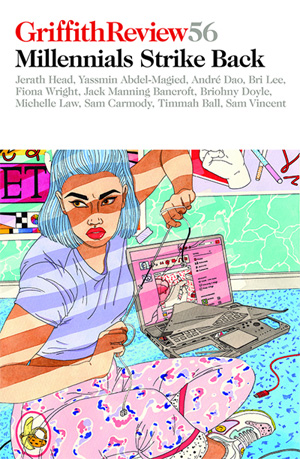IGN Australia story: ‘This Vertigo-Inducing VR Game Will Scare The Crap Out Of You’, May 2017
A feature story for IGN Australia that was published on May 28. Excerpt below.
This Vertigo-Inducing VR Game Will Scare The Crap Out Of You
Meet the Australian couple behind ‘Richie’s Plank Experience’, a hit indie VR title unlike any other.
I hear a bright tone – ding! – and then the elevator doors open to reveal a vast cityscape stretching out before my eyes. Protruding in front of me is a wooden board, about three metres long and thirty centimetres wide – just thick enough to accommodate both of my feet, side-by-side. The task here is straightforward: just like the maritime method of execution, I’m meant to walk the plank.
First, I must step up onto the board. I tentatively put my left foot forward, seeking the raised edge. I shift my weight and bring my right foot up to the timber. What’s most surprising is the immediate physical response that I encounter: my heart beats noticeably faster beneath my ribcage, and I begin sweating. My brain has suddenly thrown my balance into question, because never before in my regular life have I found it so hard to put one foot in front of the other.
Heights have been problematic for me in the past: when I moved into a seventh-floor apartment in 2015, it took weeks for me to be able to stand by the edge of the balcony without gripping the railing or leaning backwards, away from the void. I had supposed this was an inherent self-preservation instinct retained from my ancient ancestors, who were smart enough to stay away from high places in favour of keeping contact with the earth. In the parlance of software development, I rationalised that this inbuilt aversion to heights was a feature, not a bug.
A helicopter passes overhead, not far from where I’m standing. Out on the plank, eighty storeys in the air, I’m holding the two wireless controllers up above my waist, like ski poles. This is mostly for balance, I suppose, but also because my mind has been gripped by a set of emotions that I’ve yet to encounter in any other form of visual entertainment. It’s a cocktail of fear, exhilaration and anxiety, and it’s because my eyes and ears are taking in sensations which I know intellectually to be false. This is virtual reality, after all, and I’m playing a game named Richie’s Plank Experience. Yet out here, on the plank, real and fake are all but indistinguishable. All my brain is concerned with is survival.
I only manage to shuffle about halfway across the length of the plank before giving in to the fear. My heart pounds, my skin prickles with sweat, and I’m completely out of my comfort zone. Before I put on the headset and headphones, I was just another guy standing in a building near the Brisbane River, watching a bunch of strangers attempt to walk a board that sits just a few centimetres off the ground, held aloft at one end by a hardcover copy of Steve Jobs, and a few stacked kitchen sponges at the other. Yet even after having watched these interactions and reactions play out on the faces of strangers, I was completely unprepared for the sensory overload that comes wrapped in the immersion. It’s simply too real.
With careful consideration, I remove my right foot from the timber and reach out into space. For a moment, this act sends my mind reeling once again, and I give a clumsy shimmy from my hip before moving my left foot off the edge, too. For about four seconds, I fall toward the hard bitumen and slow-moving inner-city traffic. I turn my head to take in the last sights I’ll ever see. When I hit the ground, everything turns white.
To read the full story, visit IGN Australia. Above photo credit: Scott Patterson.

